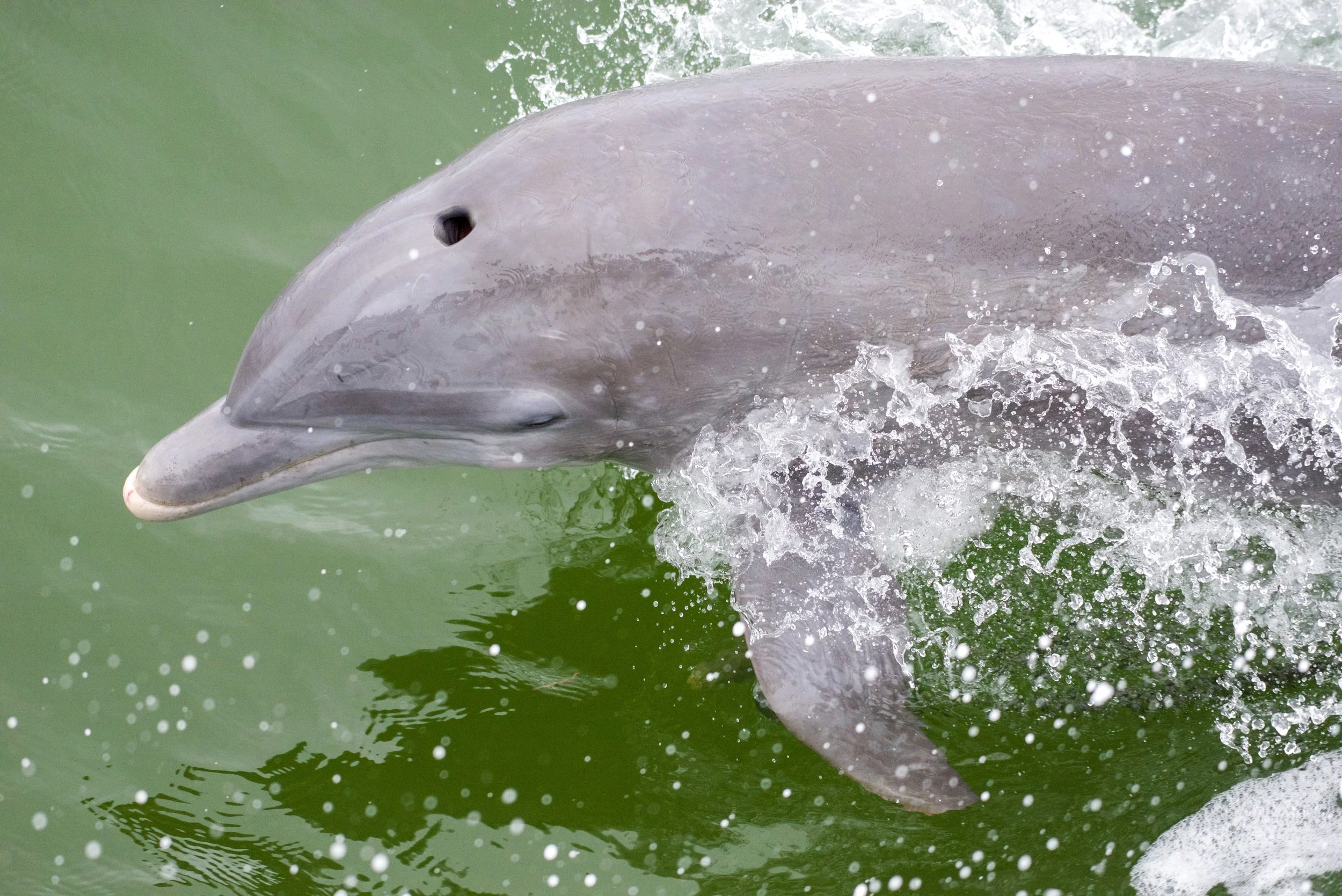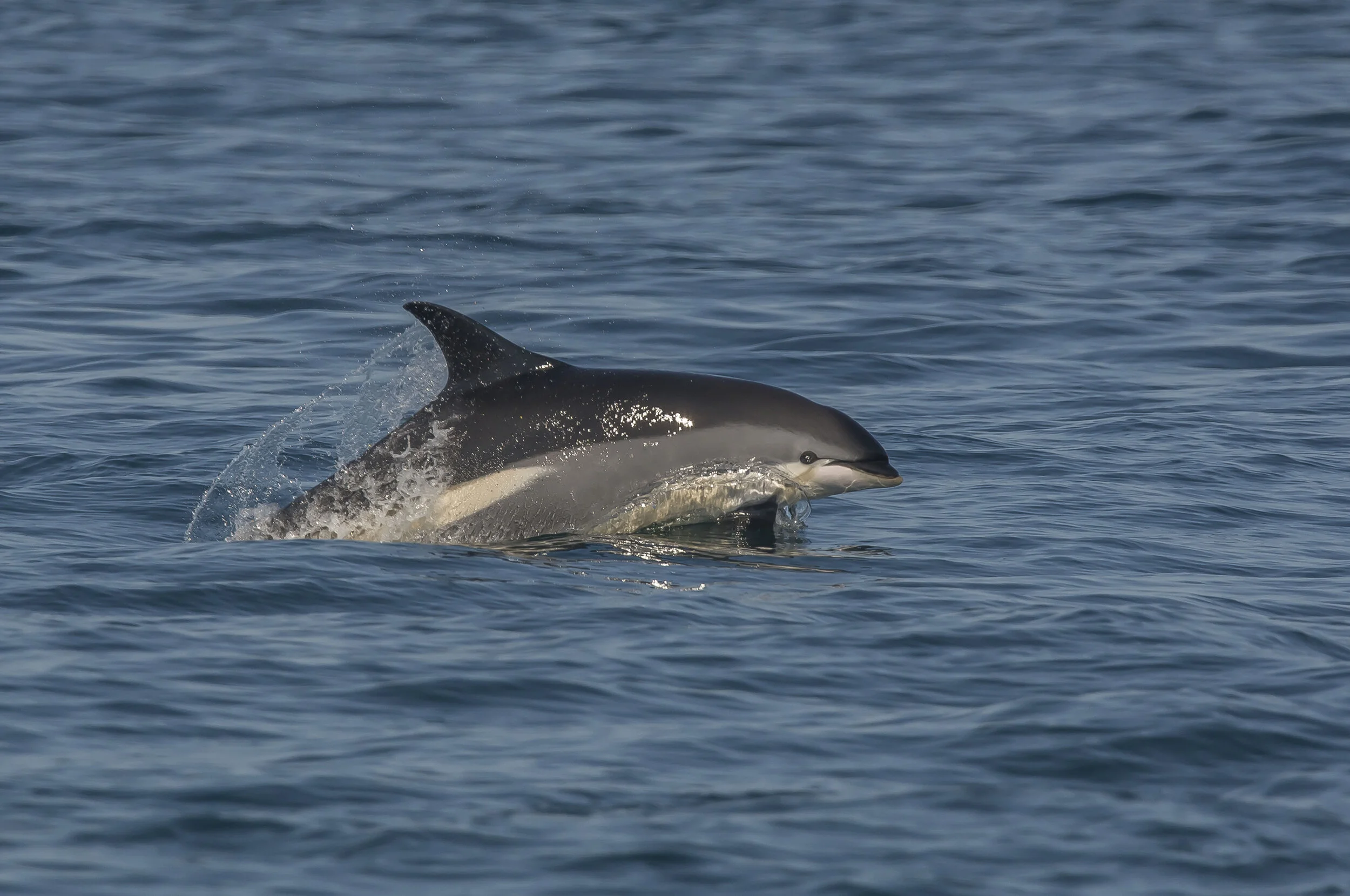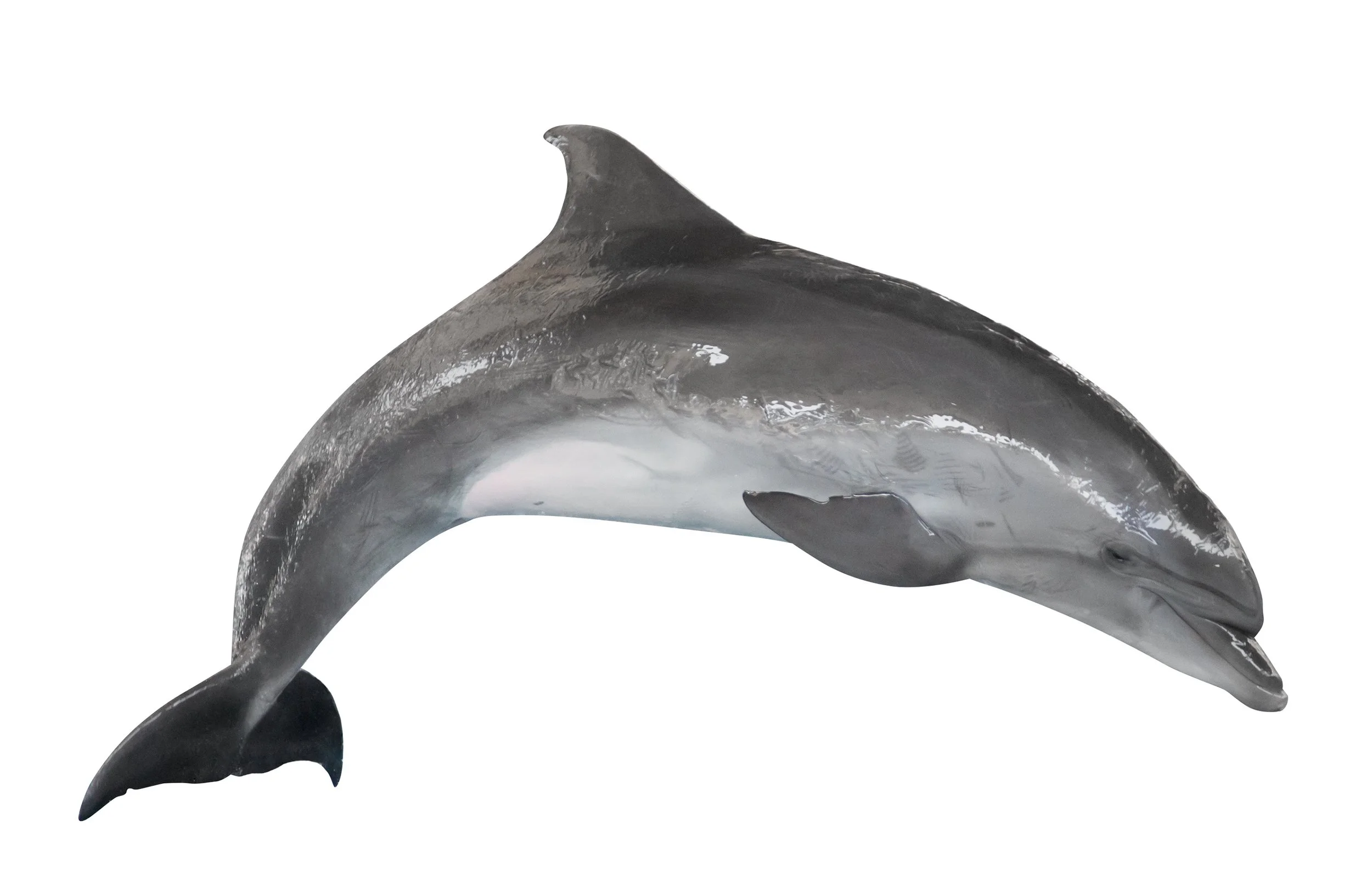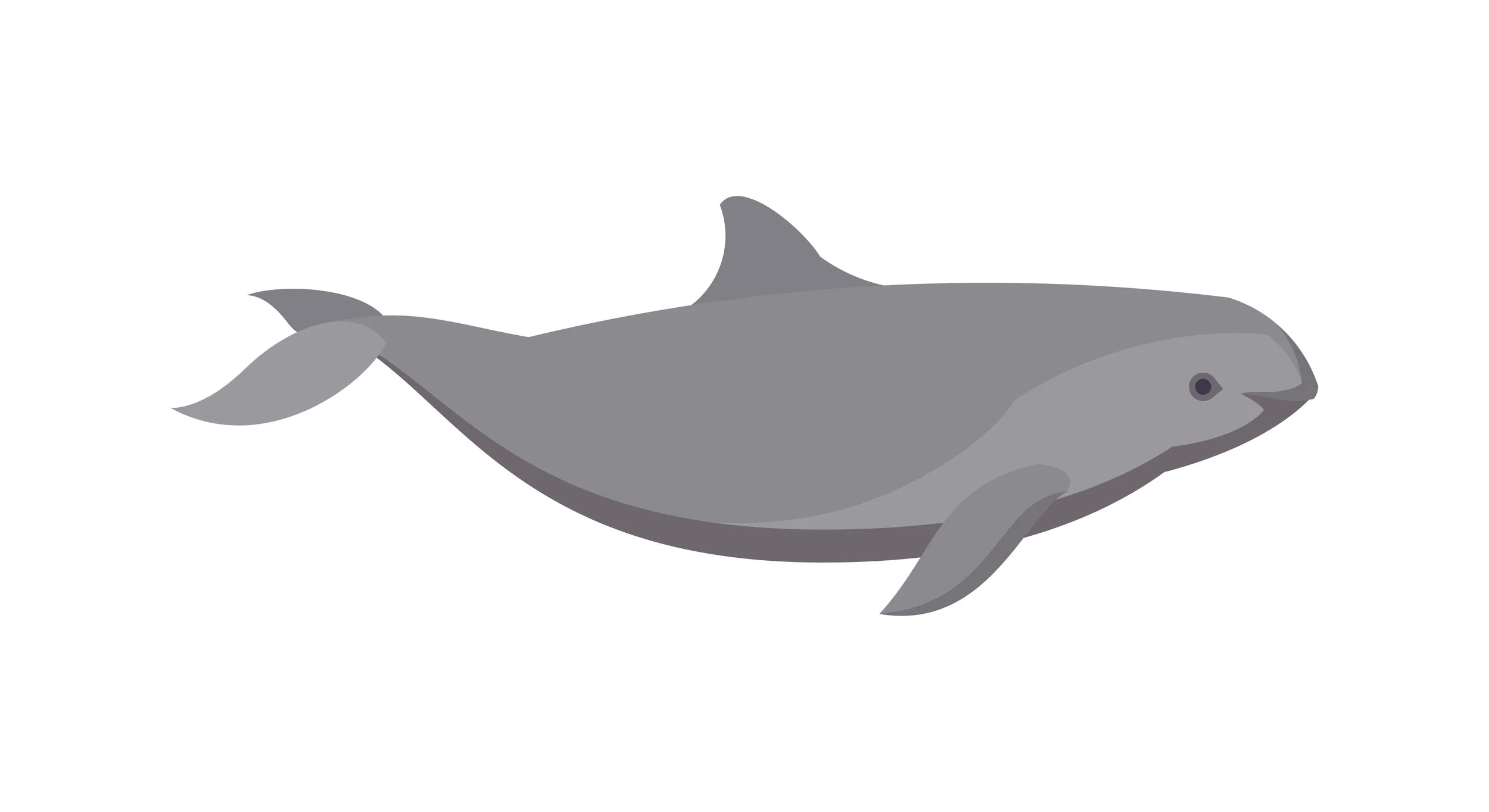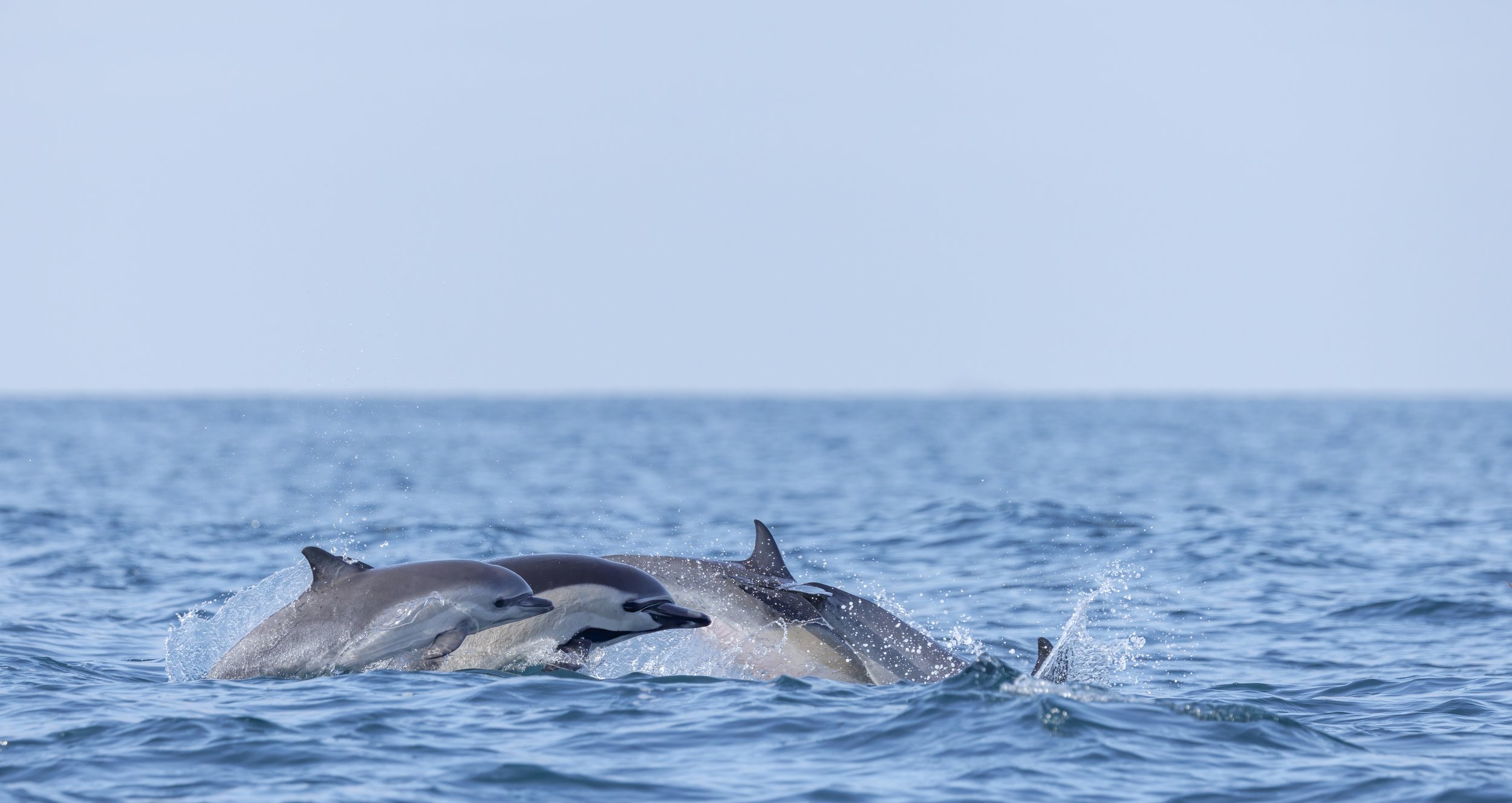
DOLPHINS OF NEW JERSEY
Dolphins and Porpoises of New Jersey
Threats to Dolphins and Porpoises
Unfortunately, the threats to dolphins are many around the world, including the coastline of New Jersey. Here are just a few according to NOAA Fisheries:
Interactions with Fishing Gear
One of the main threats to dolphins is getting caught in fishing gear. Dolphins can become entangled or captured in commercial fishing gear such as gillnets, seines, trawls, trap pots, and longlines.
Dolphins may also encounter rod-and-reel gear used by recreational anglers or for-hire fishing vessels (such as charter boats); and is largely the result of dolphins taking the bait and the catch directly from fishing gear, eating discarded fish, or being fed fish (illegally) by humans causing them to associate anglers with food. These interactions can cause dolphins to be injured or killed by entanglement in or ingestion of the gear. In addition, fishermen sometimes become frustrated when dolphins take their catch, and can retaliate with violence towards dolphins.
Habitat Destruction and Degradation
Dolphins living near shore are susceptible to habitat destruction and degradation by contaminants and oil spills. For example, dolphins living in areas with high levels of PCBs were shown to have impacts to their immune systems. In addition to chemical contamination, physical habitat degradation due to shoreline development and increased boat traffic is also of concern.
Dolphins, like other cetaceans (whales and porpoises), have a blowhole on top of their heads, which is their respiratory opening for breathing air, and is a unique adaptation for aquatic life.
Biotoxins
Several bottlenose dolphin die-offs have occurred linked to harmful algal blooms such as red tide. Dolphins can be exposed to harmful algal blooms and toxins through the air or by eating contaminated prey. Biotoxin exposure can lead to both acute and more chronic health issues for dolphins.
Illegal Harassment and Feeding Activities
Feeding and attempting to feed dolphins is harmful and illegal because it changes their natural behaviors and reduces their wariness of people and vessels. They learn to associate humans with an easy meal and change their natural hunting practices by begging for handouts and taking bait/catch directly off fishing gear. Dolphins also teach these unnatural and risky feeding strategies to their calves and other dolphins. Dolphins are then more vulnerable to vessel strikes and to fishing gear entanglements and ingestion. They also may fall victim to extreme retaliatory acts (such as shooting) by frustrated boaters and fishermen.
Dolphins may also be disturbed or harassed by the presence of humans and watercraft. Harassment is illegal and occurs when any act of pursuit, torment, or annoyance has the potential to injure the animal or disrupt its behavior.
WHO DO YOU CALL FOR HELP!
If you see a dolphin or porpoise that appears injured, entangled, sick, or being harassed by a person, in New Jersey call the Marine Mammal Stranding Center at 609-266-0538. In New York City, call the Riverhead Foundation for Marine Research and Preservation at 631-369-9829. These two organizations have the authority to help stranded or sick marine mammals and sea turtles. Wildlife experts with the help of trained volunteers will determine if an animal is in need of medical attention, needs to be moved from a populated area, or just needs time to rest.
If you discover a sick, injured, stranded or dead dolphin, porpoise, or marine mammal in another state, please contact your local stranding network. Information can be found here.
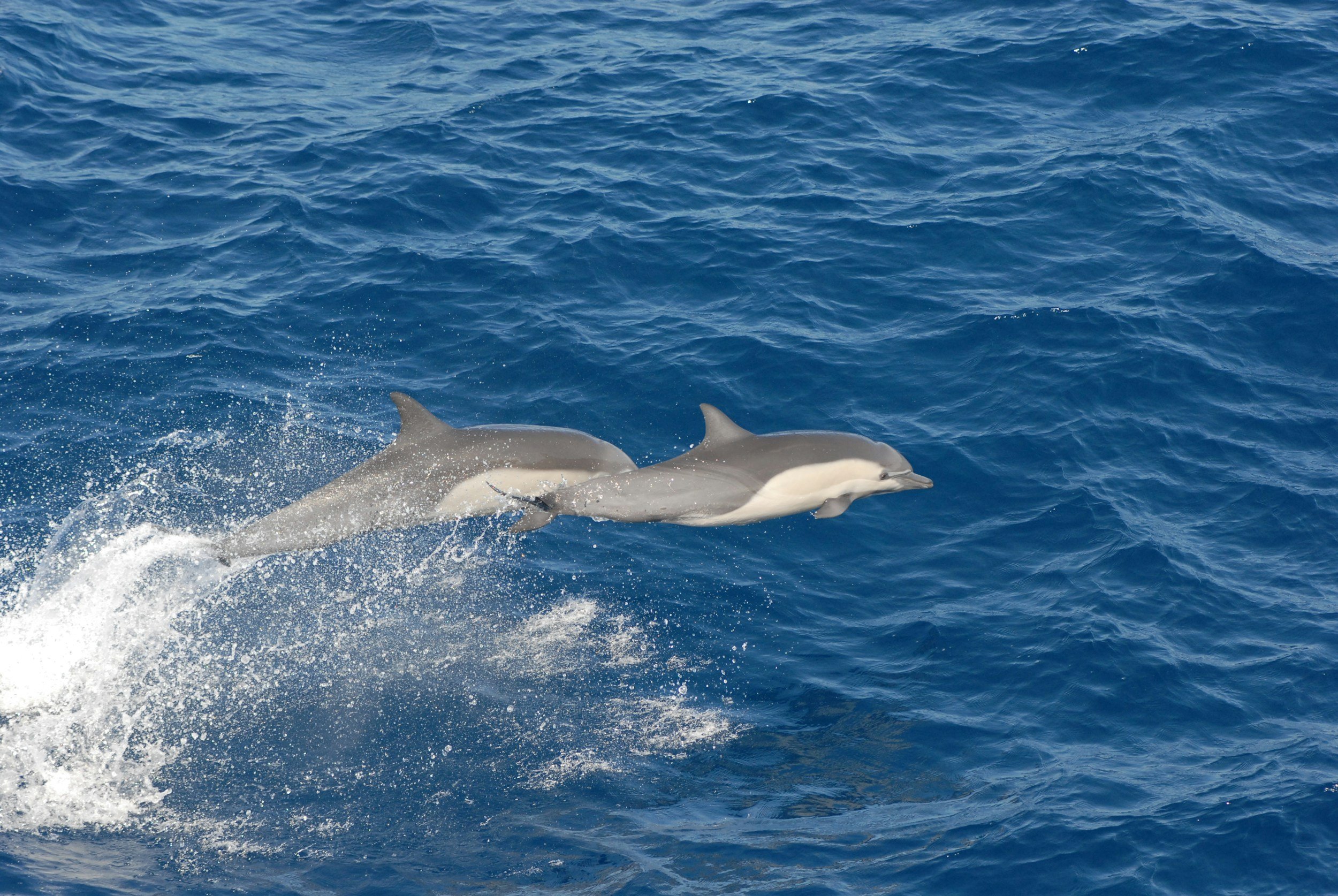
Field Guide to Dolphins & Porpoises of New Jersey.
Atlantic or Common Bottlenose Dolphin (Tursiops truncatus)
Bottlenose dolphins are the most well-known and observed species of dolphin along the Jersey Shore, especially during the warmer months of the year. Routinely seen in the coastal waters of Southern New Jersey. This area of the Jersey Shore is a particular hot spot of dolphin activity, as Bottlenose dolphins will return to the warm waters off the City of Cape May every year to feed, mate and give birth to their calves.
Two sub-species can be seen along the Jersey Shore. A coastal species is shorter and slimmer than the larger ocean or offshore form.
Size: Adult size varies from 6 to 12 feet. 300 to 1400 pounds. At birth a bottlenose dolphin is approximately 3 feet.
Body & Color: Short thick beak. High variable in color. Usually light gray on the stomach or ventral side and darker gray on the remainder of the body, but can also be darker.
Dorsal Fin: Tall and curved like a sickle. Located mid-back.
Dolphins often have scratches and scars on their bodies due to a variety of factors, including social interactions (like scuffling over food or mates during courtship), interactions with predators (like sharks or killer whales), and even from their environment, like feeding around rocks and reefs.
Dives: Dives for 3 to 4 minutes. Beak rarely visible when surfacing.
Behavior: Coastal sub-spaces generally forms small groups. Offshore subspecies can form larger groups into the hundreds. Very acrobatic.
Diet: Feeds on a variety of fish, shellfish, and squid.
Life history: Females usually mature at 5 to 10 years; males 8 to 12 years. Single calf is born by a single female every 3 to 6 years. Lifespan is between 40 to 60 years.
Status: Generally common, not locally listed as a threatened species.
Short-beaked Common Dolphin (Delphinus delphis)
An off-shore species of dolphin. Short-beaked common dolphins are often found in association with underwater ridges, seamounts, and continental shelves where upwelling (a process in which deep, cold, nutrient-rich water rises toward the surface) occurs and prey is abundant.
Size: Adults around 7.5 to 8.5 feet long. Around 170 pounds. At birth, a short-beaked common dolphin is approximately 32 inches.
Body and Color: Slender body. Pointed beak. Distinctive dark back and cape forma V-shape saddle that dips below the dorsal fin. Tan patch and gray patch cross below the saddle. White chest and belly.
Dorsal Fin: Tall and shaped like a sickle; located mid-back. Usually dark with lighter center.
Dives: Fast and acrobatic. Maximum dives to 8 minutes.
Behavior: Can form large groups into the thousands, but generally groups of 10 or 20 are seen. They may swim alongside ships and even large whales for long periods of time.
Diet: Feeds on a variety of fish and squid. Short-beaked common dolphins usually rest during the day and feed at night.
Life history: Sexually mature at 3 to 5 years. Single calf every year. Life span 25 to 40 years.
Status: Common, but local population trend is unknown.
Striped Dolphin (Stenella coeruleoalba)
Striped dolphins are an off-shore species. They are usually found in tight, cohesive groups of about 25 to 100 individuals. They display a unique behavior called roto-tailing, when the animal leaps high out of the water and vigorously rotates its tail while airborne.
Size: Adults between 7 to 8.5 feet long. Up to 350 pounds. At birth a young dolphin is approximately 3 feet long.
Body and color: Slender body and narrow pale tail. Moderately long dark beak. Dark, slender and pointed flippers. Generally dark gray in color, bluish gray sides and white to pink belly. Black stripe from eye to anus.
Dorsal fin: Tall and thin, dark and shaped like a sickle.
Behavior: Groups of 100 or more segregated by age and sex. Swims near or with Gulf Stream.
Dives: Maximum dives 5 to 10 minutes. Acrobatic.
Diet: Feeds on deepwater squid, fish, and shrimp.
Life history: Sexually mature at 5 to 9 years. Singe calf every 3 years. Life span up to 58 years.
Status: Striped dolphins are abundant and widespread in offshore U.S. waters and throughout the world. Striped dolphins have been subjected to drive hunts in Japan and taken in Sri Lanka and the Caribbean.
Atlantic White-sided Dolphin (Lagenorhynchus acutus)
An off-shore species of dolphin. In the United States, they are found off the coast of North Carolina to Maine. May move inshore during the summer and offshore in the winter following prey. They are named after their distinctive yellowish-tan streak on their sides.
Size: Adults 7.9 to 9.2 feet long. 400 to 500 pounds. At birth a calf is approximately 4 feet long.
Body and color: Gently sloping forehead. Short, thick two-colored beak. Beak is black above and white below. Black back, flippers and fluke. Gray sides and white belly. White band below dorsal fin connects with yellow band on tail.
Dorsal fin: Tall and shaped like a sickle, sharply pointed with narrow base. Located at mid-back.
Dives: Surface at 15 to 20 seconds. May leap of water or barely break surface.
Behavior: Small groups inshore to larger groups of 500 or more offshore. Fast and acrobatic. Often swims near whales including humpbacks, fin and pilot whales. Strandings common.
Diet: Schooling fish and squid.
Life history: Sexually mature at 5 to 8 years. Single calf every 2 to 3 years born June to July. Life span 27 or more years.
Status: Common and possibly increasing, but local population is unknown.
Dolphins and porpoises are actually two different types of marine mammals or cetaceans.
The easiest and quickest way to tell them apart is by looking at the head.
Dolphins typically have a bulbous head and often a clearly-defined “beak,” from their face.
In contrast, porpoises have a rounder face without the pronounced beak. If you can’t get a good look at the head, then take a look at the fin. Dolphins have a curved dorsal fin, while porpoises have a dorsal fin that is more triangular in shape.
Bottlenose dolphin.
Harbor porpoise dolphin illustration.
What’s the difference between a dolphin and a porpoise?
Harbor Porpoise (Phocoena phocoena)
The harbor porpoise is a timid and a wary animal, most often seen alone or in groups of two or three. They prefer coastal areas and are most commonly found in bays, estuaries, and harbors. The harbor porpoise prefers cold water and swims usually in less that 650 feet in depth, but may winter off the Continental shelf or along coastal waters of the mid-Atlantic, including the Jersey Shore.
Size: Adults 4.5 to 6 feet. 135 to 170 pounds. At birth a calf is approximately 32 inches.
Body and Color: Smallest cetacean alone the Jersey Shore and U.S. Atlantic. A sticky body with pointed flippers. No beak. Dark gray in color or black on back with lighter sides and white belly. Dark narrow band between mouth and flipper.
Dorsal Fin: Small and triangular, located slightly from mid-body.
Dives: Surfaces frequently when traveling, may take 3 to 4 breaths at 2 to 3 minutes apart when feeding.
Behavior: Travels along or in small groups up to 10. May approach a boat, but generally is shy and avoids vessels. Not very acrobatic.
Diet: Schooling fish, crabs, and squid.
Life history: Sexually mature at 3 to 5 years. Breeds in summer. Single calf born year 1 to 2 years. Life span around 24 years.
Status: Harbor porpoises in the United States are not endangered or threatened. Like all marine mammals, they are protected under the Marine Mammal Protection Act.
Globally, all porpoise population are in decline. The most serious is the Vaquita porpoise, which only has between 6 to 20 in existence as of 2020. In the last decade, the Yangtze finless porpoise population has declined to around 1,000 individuals or less. Due to their shy and elusive nature, scientists know little about the behavior of porpoises in the wild. For the most part, research on porpoises has only been focused on specimens rescued or already dead as bycatch in fishing nets. In the Gulf of Maine region in the early 1990s, for example, as many as 3,000 harbor porpoises were drowned in commercial fishing gear.

